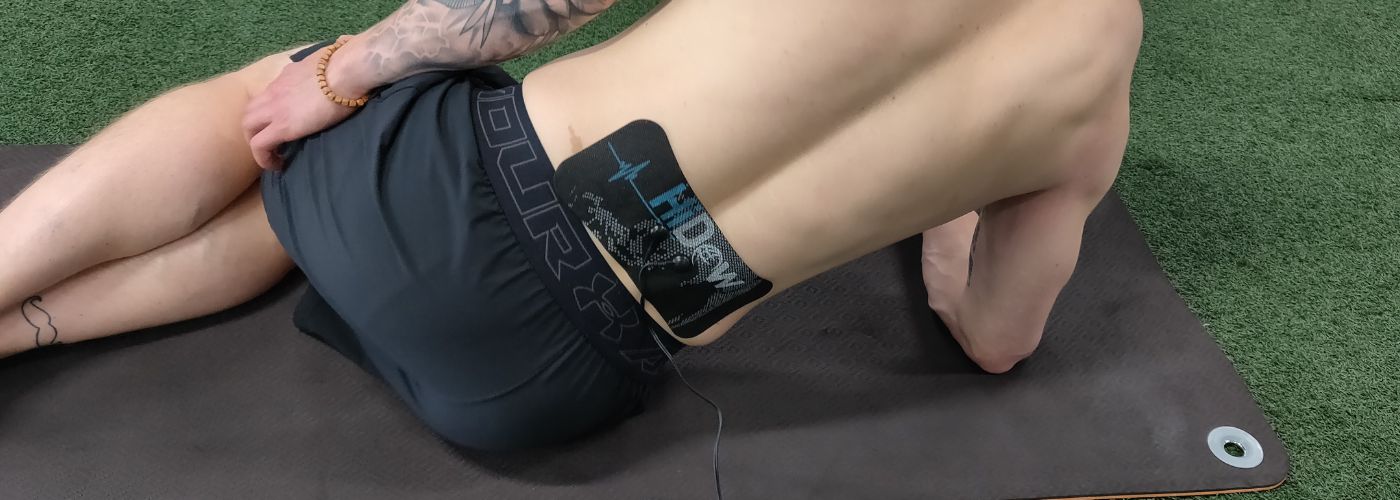In a world where chronic pain and muscle tension have become unwelcome companions in our daily lives, the quest for relief often leads us down a winding path of medications and invasive procedures. Enter TENS (Transcutaneous Electrical Nerve Stimulation) and EMS (Electrical Muscle Stimulation) therapy that is revolutionizing non-invasive treatments. We’ll be going over the top conditions treated with TENS & EMS therapy.
How Does TENS & EMS Therapy Help?
TENS and EMS therapy offer innovative pathways to pain relief and muscle recovery, seamlessly integrating technology into wellness routines. By delivering low-voltage electrical currents through the skin, TENS may disrupt pain signals before they reach the brain, allowing individuals to experience significant reductions in discomfort—making it a go-to for chronic pain sufferers.
Interestingly, many users report not only physical relief but enhanced emotional well-being, as managing pain effectively can significantly uplift mood and motivation.
On the other hand, EMS focuses on stimulating muscle contractions directly. This treatment aids in muscle rehabilitation post-injury or surgery by promoting blood circulation and enhancing recovery rates.
In sports settings, athletes often harness EMS not merely for recovery but also for performance enhancement; it may help energize fatigued muscles without putting additional strain on them during workouts.
Embracing these therapies may transform personal fitness approaches or aid those navigating life with ongoing physical challenges—showing that technology may just be one of our strongest allies in achieving holistic health.
Assists With Chronic Pain Management
TENS & EMS therapy may be particularly beneficial for individuals grappling with chronic pain conditions, these therapies work by delivering gentle electrical impulses that may disrupt the pain signals sent to the brain. By stimulating endorphin release, TENS not only alleviates discomfort but also empowers users to regain control over their daily activities and quality of life.

Moreover, these modalities are versatile; they extend beyond just easing chronic back or joint pain. Conditions such as fibromyalgia, arthritis, and even headaches may respond positively to TENS and EMS treatment. This dual-action approach isn’t merely about symptomatic relief—it contributes to muscle recovery and rehabilitation after injuries or surgery.
With portable devices now available for home use, patients can incorporate this therapeutic strategy into their lifestyle seamlessly, aiding recovery while promoting independence from medications that often come with undesirable side effects.
Speedy Recoveries For Sports Injuries
One of the standout benefits of these non-invasive therapies is the role they play in fostering speedy recoveries for sports injuries. Many athletes integrate TENS into their recovery protocols to manage pain without reliance on medication, allowing them to return to their workout routines more comfortably and efficiently.
By modulating pain signals and promoting better blood flow to injured areas, TENS can significantly enhance healing processes.
Similarly, EMS is revolutionizing rehabilitation practices by not only alleviating discomfort but actively stimulating muscle contractions that promote strength recovery post-injury. This feature is essential for preserving muscle integrity during immobilization or reduced activity phases following an injury.
Engaging with these modalities may present an opportunity for athletes to maintain some level of fitness; whether it’s through gentle stimulation while resting or enabling targeted workouts that keep muscles engaged without overexertion.
Assisting Mobility With Arthritis Relief
For individuals grappling with arthritis, these devices is one of the many conditions treated with TENS & EMS therapy. By stimulating the nerves to disrupt pain signals sent to the brain, it may lead to significant relief from arthritis-related aches.
This not only empowers sufferers to engage more freely in their daily activities but also fosters a sense of independence often lost to the limitations of this condition.
Many people suffering from arthritis use these devices by combining them with a structured exercise regimen and physical therapy. One exercise that is often used during their regimen is gentle stretching, which can help improve range of motion and reduce stiffness in the joints.
Stretching exercises like arm circles, wrist flexor stretches, and seated leg raises can be particularly beneficial. Additionally, low-impact activities such as walking or swimming are frequently recommended to enhance circulation without putting excessive strain on the joints.
Targeted Soreness Recovery After Workouts
Targeted soreness recovery after workouts may be significantly improved using TENS therapy, which works by sending electrical impulses through the skin to disrupt pain signals sent to the brain.

Many users report substantial reductions in chronic pain conditions such as arthritis or fibromyalgia, enabling them to regain mobility and function in their daily lives.
EMS therapy complements this by focusing on muscle stimulation for rehabilitation and strengthening. Ideal for athletes recovering from injuries or anyone facing muscle atrophy due to inactivity.
By integrating these therapies into a holistic wellness routine, individuals may create personalized recovery pathways that allow them to bounce back faster from intense workouts.
Assisting Neuropathy For Diabetics
One of the conditions treated with TENS & EMS therapy is peripheral neuropathy for diabetics. Neuropathy can cause debilitating pain, numbness, and weakness, often leaving patients searching for relief.
By applying TENS therapy through specialized devices like TENS socks that stimulate sensory nerves, individuals with diabetic neuropathy may experience significant reductions in discomfort while enhancing their overall quality of life.
Moreover, it also helps diabetics by promoting blood circulation, which can be particularly beneficial for those at risk of developing further complications associated with diabetes. Improved circulation helps facilitate nutrient delivery and waste removal, ultimately contributing to better foot health—a critical concern given the increased incidence of foot ulcers in diabetic patients.

Related Stories
Pickleball vs. Tennis: The Science of Recovery
For years, tennis was the stand-in for movement: endurance, coordination, and power all at once....
Oct
5 Ways to Support Bone Strength with HiDow
World Osteoporosis Day (October 20) October 20 is World Osteoporosis Day, and chances are, you’ve...
Oct
FDA-Cleared Is a Flex. Here’s Why.
Pulling Back the Curtain You’ve seen it on boxes, on websites, in ads: FDA-cleared. It...
Sep
This Is Fibro. This Is Larry.
September is Pain Awareness Month. And we’re not here to give you medical definitions or...
Sep
Train Your Relaxation Reflex
How often do you find yourself struggling to switch off after a long day? With...
Aug
Back To School Fitness: Balancing Academics & Athletics
Most student athletes don’t have a motivation problem. They show up. They train hard. They...
Aug